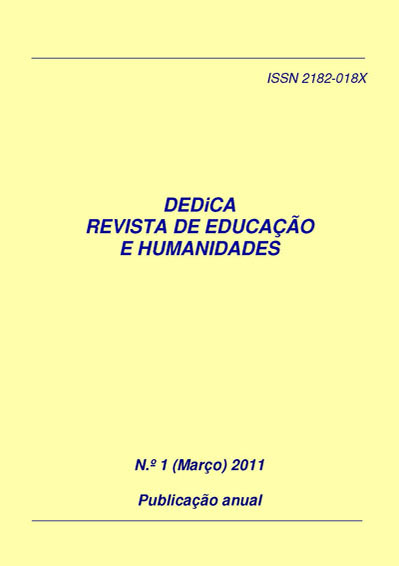O indivíduo e o grupo: uma lição prática de ritmo musical
DOI:
https://doi.org/10.30827/dreh.v0i1.7183Palabras clave:
educação, música, ritmo, percussãoResumen
É geralmente aceite que a música tem muitas funções e está presente em todas as culturas. Esta característica quase única faz como que a antropologia considere a música um “Universal Humano”. Assim sendo, o estudo da música será o próprio estudo da raça Humana. Esta é então uma das razões para a defesa do ensino de música desde o mais cedo possível no processo educacional. Por outro lado, o ritmo é considerado por muitos como o parâmetro fundamental da música, profundamente enraizado na nossa fisiologia e sistema cognitivo. Muitos estudos apontam para que desde tenra idade as crianças se relacionam perceptualmente muito bem com o ritmo, facilmente imitando estruturas rítmicas. Este artigo apresentará alguns jogos rítmicos que poderão ser utilizados em aulas de diferentes grupos etários. Ao tocar em sintonia rítmica e métrica, os alunos desenvolverão facilmente consciência de grupo, sendo capazes de responder e de se ajustar a outros colegas num contexto de grupo. Através da motivação para a improvisação e sua prática, os alunos serão também capazes de desenvolver a sua individualidade e criatividade sem perderem a noção da sua integração no grupo. Os jogos rítmicos propostos neste artigo são uma ferramenta de linguagem universal que poderá ser utilizada em vários estádios educacionais, que promove ao mesmo tempo a individualidade e a integração social.
Descargas
Citas
Drake, C.; Dowling, J.; Palmer, C. (1991). Accent Structures in the Reproduction of Simple Tunes by Children and Adult Pianists. Music Perception, 8 (191) 315-34.
Epstein, D. (1995). Shaping Time. New York: Schirmer Books.
Gardner, H. (1985). The Frames of Mind: Theory of multiple intelligences. New York: Basic Books.
Lopes, E. (2003). Just in Time: Towards a theory of rhythm and metre. PhD Thesis, Music Department, University of Southampton.
Lopes, E. (2008a). Rhythm and Meter Compositional Tools in a Chopin’s Waltz. Ad Parnassum Journal, 6, 11 (2008) 64-84.
Lopes, E. (2008b). From Blues to Latin Just in Time: A rhythmic analysis of ‘Unit Seven’. Jazz Research Journal, 2, 1 (2008) 55-82.
Pinker, S. (2002). The Blank Slate. New York: Penguin Putnam.
Povel, D.; Essens, P. (1985). Perception of Temporal Patterns. Music Perception, 4 (1985) 411-440.
Rochberg, G. (1972). The Structure of Time in Music: Traditions and Contemporary Ramifications and Consequences. In J. T. Fraser; N. Lawrence (Eds.), The Study of Time II, 136-149. New York: Springer-Verlag.












